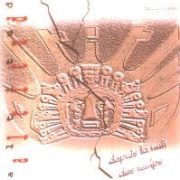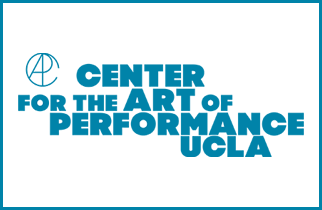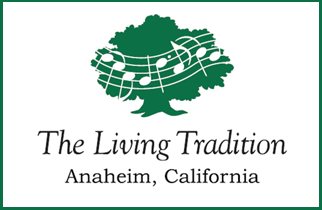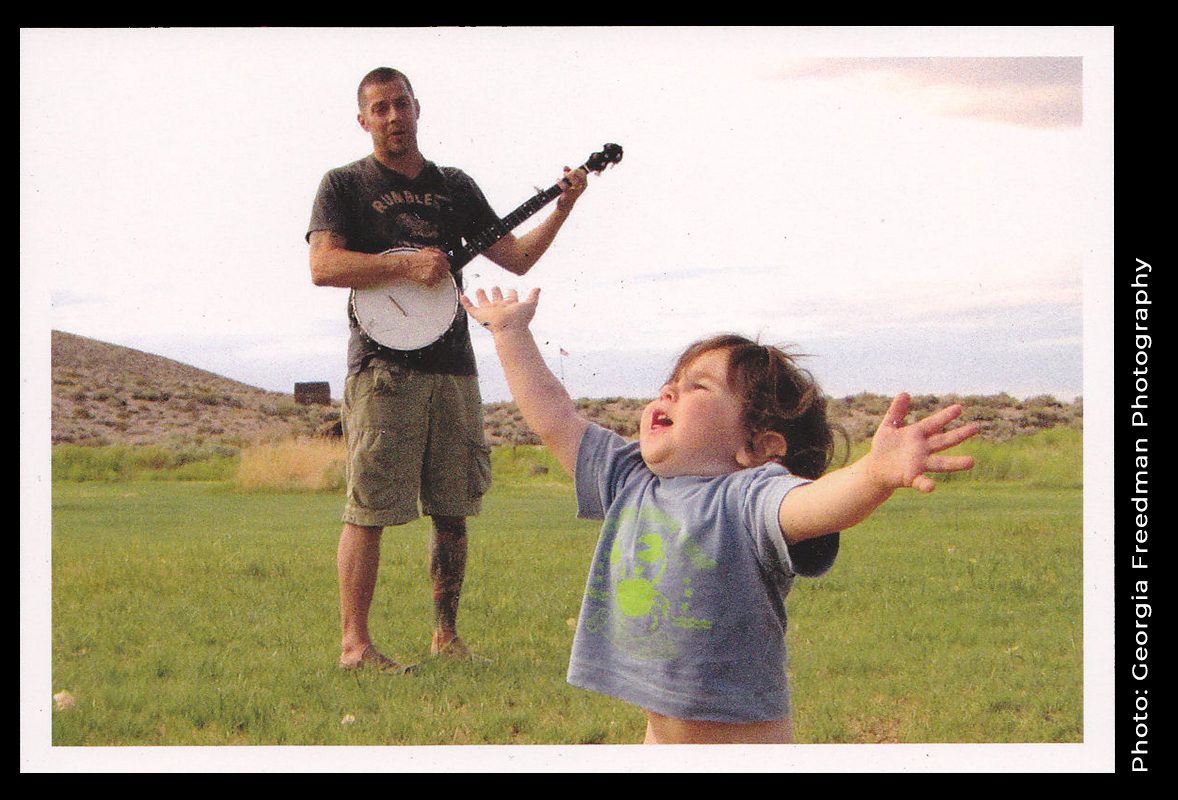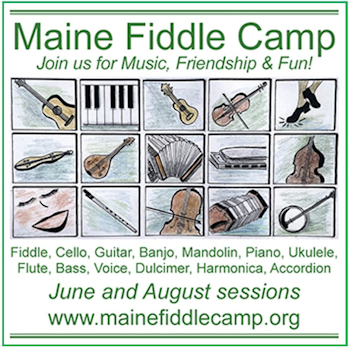A Musician of the Mountains
A Musician of the Mountains
This is the first in a series of articles on Audrey’s musical adventures in Argentina.
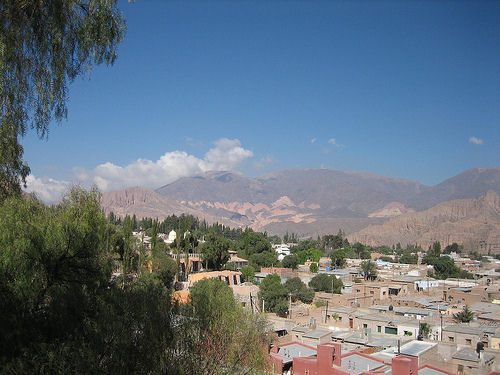
http://www.backpackerben.co.uk
The Andean cliffs on either side of the highway shone burnt orange, yellow, and rose in the afternoon sunlight as we approached Tilcara, a village in the Argentinian province of Jujuy, not far from the Bolivian border.
We knew little about the place beyond clues from Fodor’s and Lonely Planet suggesting that genuine Andean folk culture might have survived in this outpost. It was completely by chance that, as our rental car navigated the narrow dusty streets in search of our reserved lodging, we noticed a hand-written blackboard sign in front of an ancient-looking house. If I recall correctly, it said: Peña Altitud – Paris en Tilcara. 9:30 esta noche: Tomàs Lipàn.
In Argentina, a peña is a restaurant or café that features live folk music. From our travels of the previous two weeks, we understood by now that the name peña by no means guaranteed that a place attracted quality performers or truly folkloric music. Still, we knew from our forays in music stores that Tomàs Lipàn was a respected folk musician with deep roots in Jujuy province. So I jumped out of our rented car and mounted the steps to Altitud.
To the left was an warmly inviting oblong room with about 30 tables and a raised performance area in the corner, to the right a kind of lounge and beyond that a kitchen. Straight ahead was an outdoor courtyard where a bespectacled, dark-haired man, portly and tall, was conversing with a fellow who was mopping the floor. I approached and asked in my hobbling Spanish if tickets remained for Tomàs Lipàn. The transaction was over in a few moments. But glancing at the restaurant area, I couldn’t help asking if we needed to come early to get a table near the performance area. The man smiled and led me into the restaurant, addressing me in Spanish. “I’m Miguel Llave, the owner. Which table would you like?”
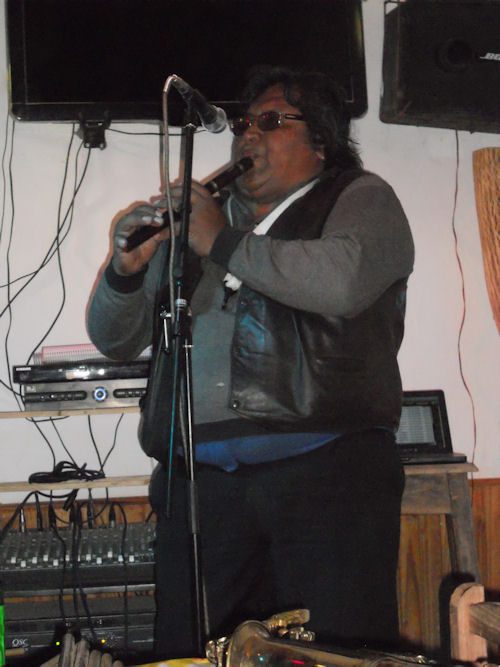
Miguel Llave improvises on his Andean flute in his peña Altitud
I introduced myself and selected a table.
That evening Michael and I arrived at Altitud an hour early since had not really adjusted to the Argentinian practice of eating dinner after 9:00pm. We entered to the sound of panpipes that a solitary figure was playing in the performance area. There was our table with a reservada sign on it, the only reserved table in the place. Only a few couples occupied the room at this point, but it filled up gradually as the musician switched from the panpipes to the lute-like charanga and then to the Andean flute.
The musician was Miguel Llave.
For each piece he played, he adjusted the knobs on the sound system, so that he always had an invisible guitar backing up his playing. His tone on the flute and pipes was pure and delicate. On the charanga, his fingers were a blur of energy yet the sound of the strings was crystal clear. His technique on the Andean instruments was flawless. We almost forgot about Tomàs Lipàn.
At 9:30pm swathed in a traditional poncho, his long hair flowing over his shoulders, Tomàs Lipàn began a set that lasted over two hours. His deep, resonant voice sang passionately about his love for the land of his ancestors, la quebrada. Sometimes he put down his guitar and took up a huge Andean drum, singing a cappella. By 11:00pm, the intergenerational audience, which now filled Altitud to capacity, sometimes clapped rhythmically to the music and sometimes sang along. A few were dancing what looked like traditional folk dances. On several numbers, Migel joined in, playing the charango. When we left, past midnight, Lipan was still taking requests and most people in the restaurant were dancing with abandon.
The following evening we were back at Altitud a little past 8:30pm with no reservation. As we entered, I heard the panpipes playing a familiar tune I don’t associate with Andean instruments — Dave Brubeck’s Take Five. Miguel went on to improvise as nimbly as any jazz saxophonist I’ve heard. Later he actually switched to saxophone and then to Andean flute, playing a jazz as free as late Coltrane.
Questions about Miguel Llave began to tickle my brain. What was his musical pedigree? Why did he call Altitud “Paris in Tilcara”? What role did jazz play in his musical life? The next morning, before we headed out on a side trip to Humahuaca, I left a message for Miguel at Altitud (he was either out or asleep) asking to interview him late that afternoon.
A few hours later, inside the empty restaurant, Miguel recounted his musical journey. We spoke in French since I discovered he was fluent and my French was far more fluent than my Spanish.
Born and raised in Tilcara, Miguel had picked up Andean instruments like many musicians, by watching and listening to masters in the community rather than through formal lessons. As a young man in the late 1970s, he helped form an Andean folkloric quartet they called Altitud. They gained local, then national acclaim –easy to understand if you listen to their CD Altitud: Depuis la nuit des Temps. Throughout the 1980s, Altitud toured European folk festivals.
They spent a good deal of time in Paris. At that time, South American folk music was enjoying considerable popularity among the French, Miguel told me (interview excerpts translated from the French). “It’s the same phenomenon that happened with the tango in the 1920s and 30s. It was France – Paris – that brought the tango from a marginal status in its native Argentina to an international craze. Paris is a center of cultural innovation.”
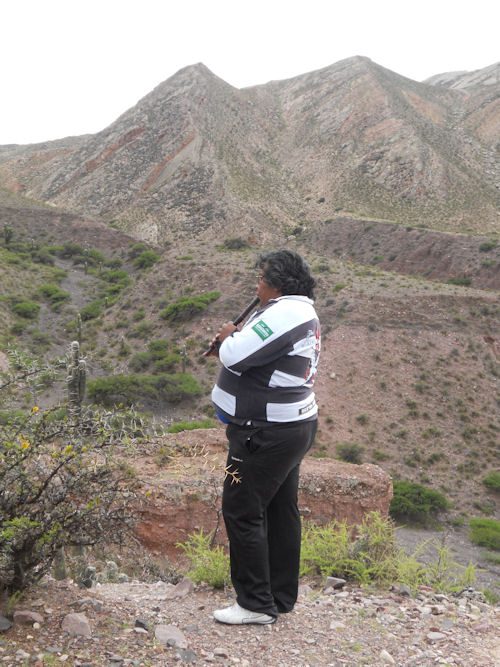
Miguel Llave plays free jazz on the Andean mesa outside Tilcara
Now I understood the origin of the words on the sign, “Paris in Tilcara.”
Although he had made some attempts to improvise on traditional Andean instruments back in Tilcara, it was in Paris that he experimented more intensely. “Tilcara is isolated and I didn’t even have occasion to listen to jazz records, but in Paris I heard “free jazz” and there was a whole world of jazz including American players. I jammed with members of Miles Davis’s group. I hung out with Europeans who had played with the great American jazz men. Little by little, I incorporated the ability to improvise.”
Miguel decided to remain in Paris, where he studied at the Sorbonne and made a living playing in cafés. But he carried Tilcara in his soul.
He pointed to a large photograph of the Andean mountains on one of the walls in Altitud. “You’ll see tonight. I’m going to improvise on those mountains. There are ruins of an ancient people on those slopes. They give me the inspiration to improvise and compose. I adore free jazz. It lets me be creative.”
After 25 years in Paris, Miguel returned to Tilcara and gradually established his peña, visiting Paris for a few months each year. He gestured to the oblong space of the restaurant. “This old building was once a hotel. We took down the walls to make room. At first we didn’t even have chairs. We sat on beer cases. But little by little, I was able to equip the place.”
Folk musicians came to play, gradually some of the most important ones such as Mercedes Sosa and Atalpaca Yupanqui. Miguel led me through the courtyard to an area that was an outdoor stage under construction. In the future wants to feature larger performance groups and even classical ensembles.
I asked Miguel if he felt any responsibility for preserving traditional Andean music.
“It needs to be preserved as a cultural reference, but it’s also necessary to be creative, to bring a little more to our music…We can’t remain static like a photograph. Life continues and we have profound cultural references, but I believe that the world – humanity — is experiencing more and more diversity and that leads to the birth of mixtures (musical hybrids). Besides, all this (traditional) music was once something new. We must not lose it, but at the same time we need to move forward.”
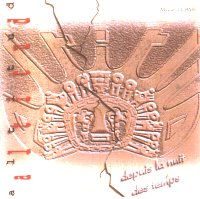 Early the next morning Michael and I accompanied Miguel on a walk he often takes up the slopes outside Tilcare. For over an hour we followed Miguel up the slopes under mercifully overcast January summer skies. We would have been sweating much more had the sun been out. I got unexpected refreshment when, trying to jump across a flowing muddy stream, I fell in the water. Miguel yanked me out with one hand, the other hand reserved for his flute.
Early the next morning Michael and I accompanied Miguel on a walk he often takes up the slopes outside Tilcare. For over an hour we followed Miguel up the slopes under mercifully overcast January summer skies. We would have been sweating much more had the sun been out. I got unexpected refreshment when, trying to jump across a flowing muddy stream, I fell in the water. Miguel yanked me out with one hand, the other hand reserved for his flute.
Up on the mesa, purple and yellow wildflowers dotted the scrubby ground. Saguaro cacti, from a foot to over six feet tall, looked like giant fingers pointing toward heaven; many of them sported white flowers at various stages of bloom. The largest hummingbird we have ever seen hovered over and then rested on a branch protruding from just below the top of the cliff where Miguel began to play his flute.
I leave you with the image that forever will rest in my memory: Miguel Llave standing at the edge of an Andean cliff, improvising on his flute to the ancient mountains as his music echoes in the abyss.
Miguel produced three CDs, two with Altitud and one solo album, Siku Jazz. So far, I have not been able to find an American distributor. If you want to see him play, there are two short YouTube videos: Miguel Llave en el Tantanakuy 9-2-2010 and Miguel Llave en su peña Altitud-Tilcara.
Tomàs Lipàn’s many albums are available on Amazon. Any one of them showcases his impassioned musical delivery. The most recent release is Amor y Albahaca (2011).
Audrey Coleman is a journalist, educator, and passionate explorer of folk and traditional music.

